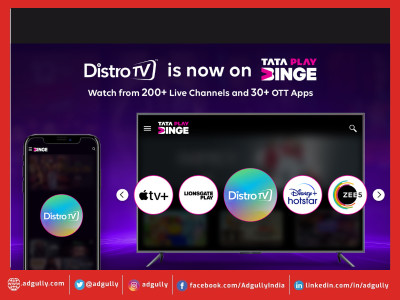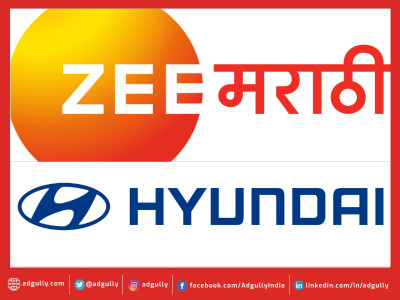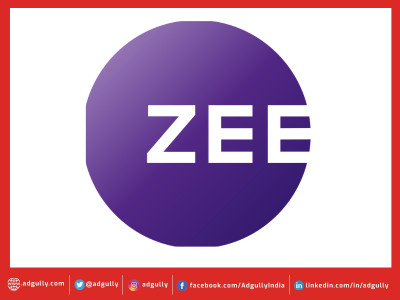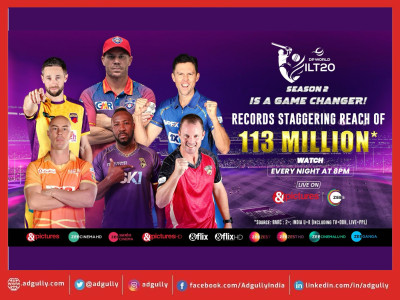Perspective | Geo-Targeting: To do or not to do?
Television today reaches every corner of the country (well, almost!) making not only content (shows) available to viewers but even commercial content like advertisements. As advertisers scrutinize every penny spent for all purposes, especially advertising, media companies are constantly making sure that advertisers find worth by advertising on a certain media while the monies keep coming alongside.
One such effort is geo-targeting advertisements making only certain advertisements available to a specific geography of the TG the advertiser wants to talk to. While this practice may have been exercised extensively on the digital platform, broadcasters have joined the trend only recently. While ZEEL’s Zee TV and ZEE Business tied up with Amagi Media (geo-targeted ad-sales company) last year, Star India has now taken the plunge with the introduction of ‘STAR ADSHARP’.
While it is seen as a significant step for the broadcasters to open up and leverage the existing opportunities, we wish to ask industry parties as how far does this trend stand as a viable option for advertisers and broadcasters alike.
In this edition of Adgully Perspective, we brought together, industry players from across sections of the industry to get their opinions and point-of-views on the same.
Our panel includes, Srinivasan KA – Co-Founder Amagi Media Labs, Vikas Khanchandani- Director, Aidem, Rohit Gupta - MSM President, Network Sales, Licensing and Telephony, Sony, Abhinav Bhatt – Media Director at Vivaki Exchange, Ashish Sehgal - Chief Sales Officer at ZEEL, Abhay Ojha, SVP- Head- Sales & Marketing, Research/Strategy & Media Operations, News Nation Network Pvt Ltd. and Ramesh Chembath, Asst V.P - Head - Marketing & LFR sales , Godrej Appliances,
Speaking on viability of geo-targeting advertising on television and the possible benefits a client would derive off the exercise, Bhatt said, “Geo targeting is very viable for TV advertisers. Bigger clients with all India presence can now boost some markets while smaller advertiser can target certain markets and control spillage at the same time”. A highly positive Srinivasan said, “The option is extremely viable! There is a dire need in the market, and technology plays the role of an enabler. Going by our experience, geo-targeted approach to advertising is a clear win-win for all the parties involved – the advertiser, the channels, the platform - provider as well as the customer!” Elaborating further, he said, “Clients are benefited in multiple ways and clarifying broadly, we believe - national advertisers can customize their campaigns regionally and regional advertisers can be on national television at a very affordable rate”.
Chembath said, "Geo targeting in India, though not new, is segregated as in India, language defines geography. So while we have city and location specific channels, on mass level it is understood that most manufacturers will target certain GRPs in certain top markets, alongside the specific cities and towns when needed."
Gupta feels that it’s still very early days to reach any conclusions however he strongly believes that, “There is still a huge opportunity for broadcasters to unlock the true value of television especially with the Y-O-Y growth on the overall reach by increasing trading levels on a regular basis without having to segment itself at this stage”.
Ojha said, “Geo targeting advertising will become more popular on television considering the extent of diversity in the country as well as the return on investment which one gets from it.
Every advertiser today works on maximization of ROI. Geo targeting advertising helps to build an emotional & direct contact with the target audience at a low cost leading to a high loyalty factor for the product. Another advantage of geo-targeting is that even small local players can reach their specific target audience at a relatively lower cost. Today Tier 2 & Tier 3 towns are new growth centres which every advertise wants to tap and localization of commercial can help them achieve their objectives.
Khanchandani is of the opinion that geo-targeting is another positive step within the television space which will drive better ROI for advertisers and drive greater yield for the broadcaster especially in the wake of Ad-Cap. “Whilst geo targeting promises to bring retail advertisers closer to national broadcasters, it will in the short to medium term offer better ROI for existing national advertisers to focus on their contributing markets thereby creating space for either the same advertiser to utilise the leftover markets for different brand or let the broadcaster bring in different advertisers for remaining markets”, he said.
Sehgal comes from the broadcast network which has inked a deal with ad networking company Amagi last year said, is of the states that “This tie-up can now make available a whole new set of targeting options for advertisers and I believe this will help us to look at increasing our client base through geo targeting, which will help local clients target their specific markets on a large GEC.”
We asked our panellist as whether geo-targeting would help attract multiple advertisers to the same ad spots there by bringing in more monies. Responding to this, Gupta is of the opinion that these options usually work in a scenario where one has unsold inventory. “But the reality is that with the Ad-Cap, most large GEC’s and movie channels are more or less sold out. Hence regular inventory would have to be taken out for this and let’s assume its 10% then huge premiums would need to be paid by smaller advertisers for the broadcaster to make additional revenue as large advertisers might over a period of time negotiate this as part of the overall deal. So if there is additional unsold inventory this will make sense”.
An optimistic Bhatt believes it’s a win-win situation for both – broadcaster as they will get higher rates at per 10 sec and the advertiser who will get additional visibility at a lesser cost. Singing similar tunes is Srinivasan who states, “You’ll find a much larger audience to sell to, once you split up the spots regionally. We believe that TV ad industry will grow significantly due to geo-targeting”. Sehgal also opines that this practice will help advertisers grow territorially at lesser price and build an infrastructure that is beneficial for all”.
Khanchandani said that the basic objective would be to drive better efficiencies on the limited ad inventory available across most of the television channels. “Today a lot of clients do not look at television as an ideal platform and depend on print or radio to have specific messaging across their key markets. Whilst regional television will continue to grow and offer advertisers addressability for key language markets, the geo targeting solution will bring in more advertisers within the fold for Hindi and English language broadcasters”.
He said that whilst FMCG will seem like ideal candidates to benefit on Hindi content channels, but over a period of time will incentivise a lot more clients and categories to look at television. “It will open categories like real estate, retail, educational institutes and many other SME’s to explore television. News broadcasters, who have the maximum advertiser base, will be able to grow and incentivise small players in various categories to look at television as an effective platform by driving better ROI’s. Even regional/ state news channels can now bring in advertisers focusing on specific cities / districts. A lot of these regional news channels are owned by print players who can now offer holistic solutions across their print runs now with a television offering”, he cited.
Understandably, as geo-targeting which is touted as a platform for smaller brands / advertisers to take the plunge to television advertising, will it prove true in the real sense?
Srinivasan said that this option will be the missing confidence to smaller advertiser to take to television advertising. “Being on national television gives these advertisers a very large reach for a very reasonable investment. If the message, strategy & execution is right, they’re sure to get their monies worth. In our experience, a lot of these advertisers are first-timers on TV who would otherwise spend on print, radio, outdoor etc”.
Ojha feels that it will support smaller advertisers as local players have specific market interests. “Earlier they weren’t able to afford National channels on cost grounds in spite of knowing the importance of National channels”, he said.
Similarly, Khanchandani also believes, the purpose of this technology is to serve the smaller/regional advertisers to get national platform and reach their target audience in cost effective manner. “If the technology can serve graphics and animated bands apart from video, it will bring classified category into television domain too. The same capabilities could then be used for dissemination of content in specific markets thereby increasing stickiness on the channel”, he said.
Gupta, stating industry figures said, “Today smaller advertisers can and do use television as there are over 500 channels to advertise on and on 80% of these national channels, the rates for a 10 sec spot ranges from Rs. 1000 to Rs. 3000, which is not to higher that regional costs”. Bhatt is of the opinion that this will help smaller advertiser to get better content - bigger channel to advertiser at almost similar cost of any regional channel.
Speaking of how this may help larger brands / advertisers to avoid spillage, Gupta said, “Yes it does help spillage but will they pay that premium, is something to look for. Also its not fully incremental audience as, let’s assume that a national advertiser runs a spot in Marathi in the Pune market, while he might gain some Marathi viewers but will lose a lot of the Hindi Viewers in that market as primarily the viewers are watching that channel because they understand Hindi, unless the advertisements are totally different, in which case the broadcaster stands to lose!”
Srinivasan assured that this is in fact at the core of this platform. “You’ll begin to see brands achieving campaign efficiency numbers which were considered unfathomable earlier. You’re reaching only those whom you want to. One way to look at this is saving on budget. From another angle, this helps you use the budget effectively to give a booster in key markets – to achieve your defined objectives faster”, he explained.
“The big clients can use this technology to run their multiple brands simultaneously to reach their target audience in different markets. Big advertisers can also utilise this technology to customize brand communication variably which is suitable to different geographic locations”, said Khanchandani.
Ojha believes that it all depends on the target group and market of the brand. “An advertiser needs to use an optimum mix of national and local mediums for their benefit. Today some big brands are experimenting with local advertising for some of their products but they are using National media for others. Yes, I feel it’s definitely helpful in avoiding spillage”.
Chembath here said, "This, in my opinion will definitely open avenues for smaller advertisers as advertising goes the micro-way. A lot of these small advertisers have the ability to canabalize other mediums as well. Also, a of companies who are now go for phasewise launch of their product and services, will be able to optimize advertising opportunities with geo targeting options. While a lot of dotcom companies who have their major markets in 8-10 cities, product companies like ours may have similar count for aspirational products while a larger geography for mass products. So, one has to understand that national advertisers may still continue to use large national targets, but at the same time may use the specific budgets slotted to them for various smaller towns and cities."
While a large section of the industry is excited about geo-targeting, a senior media broadcast expert we spoke to stood on the extreme end of the diagonal.
He strongly believes that geo-targeting doesn’t work for a broadcaster at all! “In the current scheme of things, it doesn’t work at all and thus I believe it is not a viable option. While an outfit like Amagi, which has been here for about 5 -7 years now, like its counterparts, in my opinion have not worked. When you can buy a spot for a miniscule amount of say Rs. 300 for 10 seconds on national television and when retail advertising is still not very big in India, geo-targeting may work for a certain quarter but has not succeeded on the larger scale”.
In his opinion, most of these companies are in the valuation business with a larger aim to raise funds for their respective companies.
Elaborating further he said, “If I have one channel, I am getting say for example Rs. 100 for a spot buy, the moment a geo-target you to a specific state or city, I will have to find other advertisers for other markets for the same spot, minus your city; but why will a large brand leave out that one city?!”
He said that geo-targeting, according to him, works for print and radio since it is location specific service and content is devised accordingly. However, this is not the case with broadcast as its national content and audience that one caters to. “Also, it is of less or no benefit for top line GEC’s and news channels. However, it may help the second line GEC’s and smaller news broadcasters who would have the necessary inventory to split across geographies”, he added.
He said that while it may a losing game for broadcasters, geo-targeting works for advertisers, as the advertiser may be able to split the money according to the market he advertisers in. “As far as smaller advertisers are concerned, there are not many on television. Secondly, they already have the option of cable TV advertising which, I believe, will bring them more viewership”, he said.
“So, to sum it up”, he said, “From a media perspective, ‘we do geo-targeted advertising’ sounds good merely as a statement. But the practice is completely anti-broadcasting!”
Sources also say that while the industry is still finding its ground in geo-targeting, more players are expected to join the bandwagon soon, with advanced technology, and higher efficiency.
With this extensive piece, what we understand is that while a lot of parties involved in the game are gung-ho and excited about this new advertising avenue, but not all have been able to capitalize and encash the true potential of geo-targeting as yet. As our panellist suggest, as there is inventory crush in large GEC networks, this option may not be ‘THE’ technology for top-line GEC’s and news broadcasters, however, this may come as a respite to flanking channels of group networks to gain business, at comparatively lesser cost and wider reach.
However, concluding on positivity, we believe that geo-targeting would bring in more advertisers taking to television, thus optimising ad sales for broadcasters as well. [By Ankita Tanna | Twitter: @ankitatanna4]























Share
Facebook
YouTube
Tweet
Twitter
LinkedIn